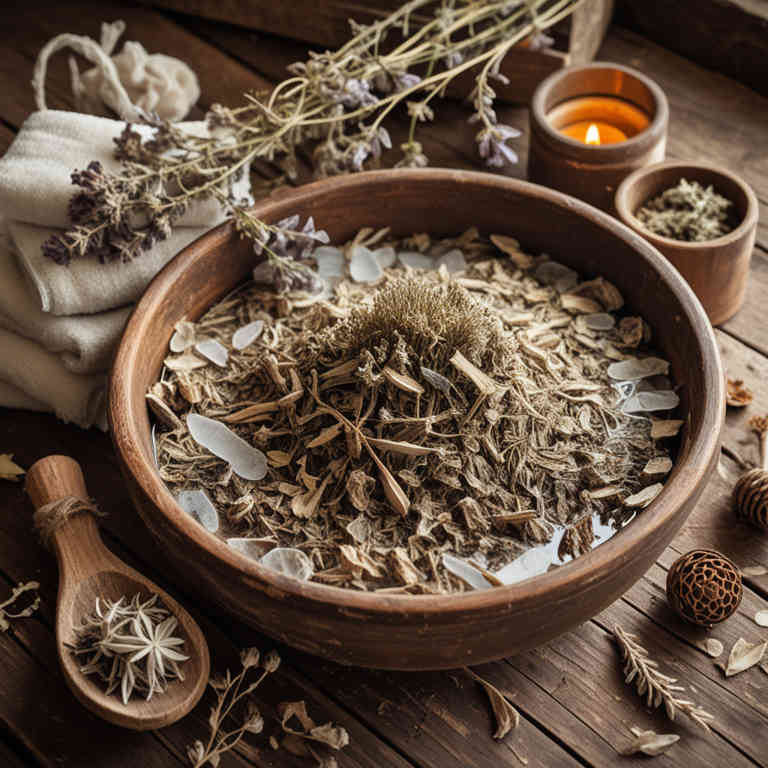Glycyrrhiza glabra bath for medicinal use

Glycyrrhiza glabra bath is a herbal preparation made from the root of the licorice plant, known for its soothing and anti-inflammatory properties.
This bath is used in herbalism to relieve skin irritations, reduce inflammation, and promote relaxation. The active compounds in licorice root, such as glycyrrhizin, help to calm the skin and ease conditions like eczema or psoriasis. It is often recommended for its mild detoxifying effects and ability to balance the skin's pH.
This preparation is a gentle yet effective way to support skin health and overall well-being through natural means.
Uses
Glycyrrhiza glabra bath has been used to soothe skin irritations and promote relaxation for centuries.
Historically, it was utilized in traditional Chinese and Ayurvedic medicine for its anti-inflammatory and healing properties. In ancient times, the roots of Glycyrrhiza glabra were boiled and used in baths to treat skin conditions and reduce stress. Modern applications include its use in skincare products for its ability to calm redness and enhance skin hydration.
Today, it is also appreciated for its calming aromatherapy benefits, making it a popular choice for stress relief and overall well-being.
Benefits
Glycyrrhiza glabra bath has health benefits such as reducing inflammation, soothing skin irritations, and promoting relaxation.
This herbal preparation, derived from the licorice root, contains compounds like glycyrrhizin and flavonoids that have antimicrobial and anti-inflammatory properties. It can help alleviate symptoms of eczema, psoriasis, and other skin conditions due to its soothing effects. The bath may also support respiratory health by easing congestion and reducing throat irritation.
Additionally, the calming aroma of licorice root can help reduce stress and improve overall well-being.
Constituents
Glycyrrhiza glabra bath active constituents include glycyrrhizin, flavonoids, saponins, and volatile oils.
These compounds contribute to the bath's therapeutic properties by promoting skin health and reducing inflammation. Glycyrrhizin, a triterpene glycoside, has anti-inflammatory and antiviral effects. Flavonoids act as antioxidants, helping to neutralize free radicals.
Saponins may enhance skin hydration and provide a mild cleansing action.
Preparation
To make Glycyrrhiza glabra bath, start by gathering 1-2 tablespoons of dried licorice root.
Bring 2 quarts of water to a boil in a pot, then add the licorice root and let it simmer for 20-30 minutes. Strain the liquid to remove the plant material, and transfer the herbal infusion to a bathtub. Allow the bath to cool to a comfortable temperature before soaking for 15-20 minutes.
This bath is known for its soothing properties and may help with skin conditions and relaxation.
Side Effects
Glycyrrhiza glabra bath may lead to increased blood pressure, electrolyte imbalance, and hormonal changes due to the presence of glycyrrhizin, which has potent mineralocorticoid-like effects.
Prolonged use can cause potassium depletion, leading to muscle weakness and cardiac arrhythmias. It may also disrupt the body's natural hormone balance, potentially affecting adrenal function and causing symptoms like fatigue or mood swings. Individuals with hypertension, heart disease, or kidney disorders should avoid this preparation.
Always consult a healthcare professional before using Glycyrrhiza glabra baths, especially for extended periods.